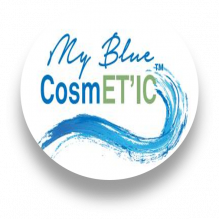
Marine bivalve microbiome: the hidden oyster pearl.
My first research experience (2013) was devoted to marine antimicrobial peptides application as preservative in cosmetics. Thereafter, my Ph.D thesis. co-supervised by Y. Fleury and P. Le Chevalier (UBO, France, 2013-2016) was dedicated to the marine host associated microbiome and its role in non-host immunity. I spend 2 years (2016-18) at INAF (University Laval, Canada) to characterize fish bioactive peptides to prevent metabolic disorders linked to diabetes. I have achieved a second postdoctoral position (LEMAR, France, 2018-219) to investigate the marine invertebrate microbiome plasticity faced to environmental changes. Since 2020, I am working at the Lab of marine biotechnologies and marine chemistry (LBCM). I am investigating antagonistic marine bacteria as biopreservatives in the blue biotechnology.
I co-authored 10 publications in scientific journal and gave presentations at 16 international and national conferences. I am involved in 4 national and international networks such as Federation of European Microbiological Societies (FEMS), Multifunction of Antimicrobial Peptides (MuFoPam, GDR CNRS 3625).
Due to a constant microbial pressure, marine animals harbor a specific microbiota that can be assimilated to a microbial shield. This hypothesis is supported by the hologenome theory of evolution. To explore the host associated bacteria and their metabolite chemodiversity we used marine bivalves as natural selectors.
As a first step, we defined the composition of bivalve microbiome using a metagenomic approach. In a second time, we have explored the marine bivalve culturable microbiota for antimicrobial substances. We isolated a collection of marine bacteria exhibiting antimicrobial activities. Most of them were affiliated to the genera of Vibrio and Pseudoalteromonas. The latter was deeper investigated because of its suspected ecological role in the holobiont. We characterized the bioactive compound produced by the Pseudoalteromonas strains exhibiting the stronger antimicrobial activity. These compounds are members of a new family of cationic cyclolipopeptides made of a macrocyclic heptapeptidic ring linked to different hydrocarbon tail and named Alterins. These exotics compounds were assayed as conservatives in dermocosmetic products using the RAPA assay. Alterins were shown to be as effective as Chlorhexidine. These results exemplify the host associated microbiome as a natural reservoir of bacterial biodiversity and metabolite chemodiversity still to be explored for biotechnological applications.
